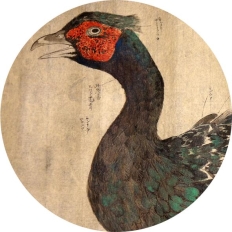Aves Japonicae 2 – Specimens on Paper

Details
| Type | Exhibition |
|---|---|
| Intended for | General public / Enrolled students / Applying students / International students / Alumni / Companies / Elementary school students / Junior high school students / High school students |
| Date(s) | May 26, 2015 — August 30, 2015 |
| Location | Other campuses/off-campus |
| Venue | Intermediatheque STUDIOLO [Address]JP Tower/KITTE 2-3F, 2-7-2 Marunouchi, Chiyoda-ku, Tokyo, JAPAN [Access]JR lines and Tokyo Metro Marunouchi line Tokyo Station. Direct access from the Marunouchi Underground Pathway. |
| Entrance Fee | No charge |
| Registration Method | No advance registration required |
| Contact | +81 3 5777 8600 (Hello Dial) |
This exhibition reconstructs how Japanese artists gazed at birds, based on the Japanese drawings produced by Kakyo Kawabe in the Meiji era.
When we think of birds in Japanese paintings, the impression left by schematic icons such as the pine tree and the crane or the moon and the goose is particularly vivid. Nevertheless, these artists did not draw from imaginary templates. The present scroll is a complete reference book for drawing birds, and plays the role of a research specimen. Artists sketched by meticulously observing real birds in front of them, but resorted to reference books when that was not possible. This is how they attempted to reach a higher degree of realism.
With the birds before them, artists developed their skill and knowledge by counting the birds’ feathers, drawing every single scale on their legs. Some figures drawn also show details of body parts.
Furthermore, drawings made from dead birds need to reconstruct their lively postures. This is why rough sketch of live birds are also included in the reference book, which has the same function and content as character model sheets in present-day animation movies.
For this exhibition, we focus on the Common Pheasant and the Wood Duck. It is not easy to comprehend the Pheasant's complex plumage patterns or the Duck's feather layers. However the observing eye which has produced these precise illustrations is no different from a scientist’s sharp and objective eye. These traditional artists were also eminent observers, as well as illustrators of natural history.
[Organizer]The University Museum, The University of Tokyo (UMUT)







